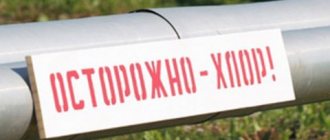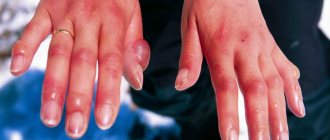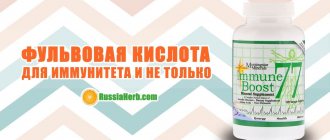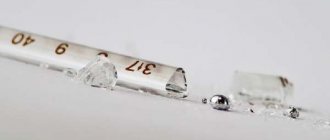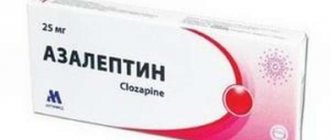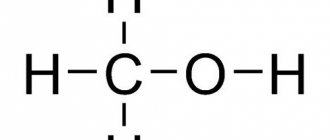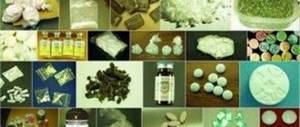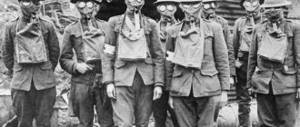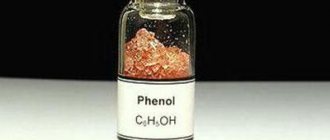Poisonous wech (hemlock) is considered the most poisonous plant growing in the European part of the Russian Federation, North America and Asia. Its height varies from 60 to 130 cm. However, despite the danger both in dried and fresh form, folk remedies are often made from hemlock to treat a variety of ailments.
Description of the plant
Vekh belongs to the Celeryaceae family, they are also called Umbelliferae for the type of inflorescences. This feature is noticeable in the photo. The plant is perennial. The stems are hollow, smooth, thicker at the base. The heavily dissected leaves are colored in a rich green hue. They are narrow and elongated in shape. The crop blooms from July to August. The flowers are white, small. The diameter of the inflorescences is from 6 to 12 cm.
The rhizome is large, white, with small cavities inside. They contain a toxic substance. The cut shows several partitions. The stems reach a height of one and a half meters and are covered with a reddish coating. The leaves growing closer to the crown are much smaller in size than the lower ones. The fruits are ribbed achenes about two cm in size. The fruiting period begins in August and lasts until October. Outwardly, the culture resembles harmless members of the family. Therefore, it sometimes ends up as food for people and livestock.
Important!
The poison of the milestone is not destroyed during long-term storage, but only when exposed to strong acids.
Milestones against cancer
Vekh contains a special type of poison that has antimitotic properties, that is, it suppresses the process of cell division. It also has antitumor cytostatic activity. Thus, it not only inhibits the process of cell reproduction, but is also capable of completely destroying malignant tumor cells, which also suggests a reduction in the overall cancer intoxication of the body.
Regardless of the location of the tumor, the action of the milestone is equally effective, because the process of blocking cell division occurs even at the stage of nuclear division.
Particular attention in the treatment of tumors should be given to the milestone also because it not only blocks large foci of the disease, but also finds metastases throughout the body and contributes to their destruction.
Treatment with drugs based on poisonous milestone blocks the possibility of relapse of the disease even after surgery. In addition, vekh is an excellent preventative agent in the fight against cancer. However, like any treatment, treatment with milestones should be carried out under the strict supervision of a physician.
Where does hemlock grow?
Poisonous hemlock grows in the cool climate of the Northern Hemisphere. It is found throughout Russia and in the northern regions of Europe, and grows in America and Canada. You can even find milestones in some places in China and Japan. Does not grow in subtropical climates due to heat.
The plant prefers wetlands with a lot of moisture or the shoreline of water bodies. Loves lowlands and damp meadows. It cannot take root in dry soil and sunny areas. But vekh harms the bodies of water near which it grows, which is why this grass is being destroyed. For this reason, it has already become rare in some regions.
Description of the species and distribution area
Vekh poisonous belongs to perennial plants of the Umbelliferae family. Among the popular names of this plant there are hemlock (the most famous and widespread), mudnik, dog angelica, cat parsley and others.
Vekh poisonous is distributed throughout Russia, from European to Far Eastern. It is extremely rare to find it in Central Asian countries and the Caucasus regions. Most often, weges can be found near fresh water bodies, including near rivers, lakes, in flood meadows and even swamps. The plant prefers very moist soils, predominantly clayey with an acidic environment.
Veh is a fairly large plant, from 50 to 120 centimeters. The stem is hollow, grooved, strongly branched towards the top. The upper leaves of the poisonous plant are double-pinnate, short-petiolate, and the lower leaves are long-petiolate and triple-pinnate. A common feature between the upper and lower leaves is a sharp-toothed appearance.
The flowers are a poisonous white shade, forming inflorescences in the form of a complex umbrella. The diameter of the umbrella ranges from 5 to 12 centimeters with a large number of rays (up to 25). Flowering time is a milestone from mid-summer until the very end. The plant bears fruit from August to September and forms a small fruit - an achene, round, with a heart-shaped base, only one and a half to two millimeters in size and consisting of two semi-fruits.
The root of the poisonous plant deserves special attention. The rhizome itself is quite thick and fleshy. The average diameter of the rhizome is about 6 centimeters and up to 20 centimeters long, with a large number of roots. If you make a longitudinal section of the rhizome, you can see that it is hollow and has many diameters.
At the same time, the cavities of the rhizome are not empty, but filled with a light yellow liquid, which changes color to a darker one when exposed to air. Vekha rhizome is very poisonous! The highest concentration of poison is observed in the spring and autumn periods. However, its toxicity does not disappear in other periods, but persists and remains very high.
How to use
Such a dangerous herb as poisonous wech is not recognized by official medicine. But it has found wide application in folk medicine. Using a milestone is associated with a great risk to health and even life. Based on its plant components, drugs are prepared to treat a wide range of diseases:
- epilepsy and seizures;
- arthritis, arthrosis and other joint pathologies;
- inflammation of the sciatic nerve;
- angina pectoris;
- high blood pressure;
- swollen lymph nodes;
- tetanus.
In homeopathy, remedies based on hemlock are also popular. But for this, a very small amount of the active substance is taken.
How to prepare a folk remedy
Take carefully, gradually increasing the dose. The first dose is one milliliter, then gradually increase, to a maximum of no more than five milliliters. Then the dose is reduced to a milligram.
Tincture of poisonous milestone
Ten grams of root, half a glass of seventy percent alcohol. Before the procedure, wear gloves, a bandage over the mouth, and goggles to protect the eyes. The most convenient place for cooking is the street. The container with the tincture is hidden in a dark place for 10 days.
Next, it is cleaned of poison. To do this, activated carbon is added. The ratio is one to ten. Preparing the tincture requires patience and time. Shake every two hours for two days to obtain a well-cleaned product. But even it is taken under the supervision of a doctor.
Composition and beneficial properties
Vekh poisonous is one of the most toxic plants growing in Russia. Its rhizomes and foliage contain cicutoxin. This yellow substance has an oily consistency and acts as a powerful poison that paralyzes the nervous system. In small doses, it can have a therapeutic effect in some diseases. It is believed that hemlock applied externally helps with skin problems. Compresses are made with it in case of inflammation in the lymphatic system.
The plant has an analgesic effect. In small doses it acts as a cure for hypertension and calms the nerves. Contains useful elements. Cicutol is an essential oil. The flavonoids isorhamnetin and quercetin have antioxidant effects.
Important!
Hemlock leaves can easily be confused with parsley or carrot tops, and the root with rutabaga.
How strong is the poison of the milestone?
The toxicity of the milestone is determined by the content of cicutol and cicutoxin in the plant. To get an idea of how dangerous these poisons are, here's an example:
- 100 g of vekha root kills a cow;
- 50 g – sheep;
- 50 mg per 1 kg of body weight - person.
At the same time, freezing, drying, and boiling do not destroy the toxin formula.
https://www.youtube.com/watch?v=Loo_nmOdyk4
Hemlock poison is a nervous system pathogen. The first thing it affects when it enters the body is the CNS (central nervous system). Toxins interfere with the production of GABA, a biologically active substance on which motor and emotional control, attention, and concentration depend.
We suggest you read How to get rid of food moths in the kitchen quickly and forever: a review of methods and folk remedies
The danger that vekh grass poses also lies in the speed of its poisons, in addition to their high toxicity. Even a small amount of hemlock eaten can cause acute signs of poisoning. Toxins can enter the body not only through the esophagus, but also due to the ingress of grass juice onto a fresh abrasion or scratch.
- Most often, animals are poisoned by weed, especially when grazing in the spring. When there is not enough grass yet, they eat everything that is green.
- The second risk group includes children who collect bouquets. The poison remains on the hands, which they may forget to wash and lick when they eat; So, along with food, toxins will enter the body. Children can also eat the fruits of the poisonous plant out of curiosity.
- Adults also need to be careful, because hemlock leaves may be among seasonal greens or those that they use for preservation and preparations for the winter. In addition, the vekha root is very similar to carrots both in appearance and in smell.
Paradoxical as it may seem, the danger of hemlock also lies in its medicinal properties. If the drugs are prepared by specialists, that’s good, but if they are amateurs who read something on the Internet, trouble cannot be avoided.
The herb is used in medicine because it contains essential oils with cuminaldehyde and P-cymene, alkaloids, and flavonoids. Homeopaths prescribe microdoses of the poisonous milestone to treat epilepsy, migraine, helminthic infestation, to relieve convulsive syndrome when children are teething, and as an antispasmodic.
Collection, preparation and storage of milestones
The rhizome and roots of the milestone are very toxic; it is not recommended to touch them. For the purpose of preparing medicines, only the green part of the plant is taken. It also contains all the medicinal qualities for which hemlock is valued. Collecting grass can only be done with the necessary precautions. Clothing should cover the skin to prevent juice from getting into exposed areas. Hands must be protected with thick gloves.
You will need a sharp knife to cut the stems. You need to dry the poles in a room with good ventilation, out of direct sunlight. The collected material for the workpiece is laid out to dry in a thin layer on paper or fabric. Dried leaves are stored in paper bags. It is necessary to ensure that the bags are securely closed and children and pets do not have access to them. After completing work, wash your hands thoroughly.
How to properly prepare raw materials for drugs
Poisonous vegetables must be properly collected and dried.
Only in this case will it be possible to prepare an effective drug. Since the plant is poisonous, extreme care must be taken when collecting it. Be sure to use gloves. It is best to dig up rhizomes in the autumn . At this time, the concentration of toxic substances in it is minimal. Clear the excavated rhizomes from the soil and place them in the shade to dry. In this case, the room should be well ventilated. In conditions of high humidity, mold forms on the raw material and its further use is impossible.
You can store harvested raw materials in tightly closed containers. Keep them away from children. Do not store poisonous vegetable along with other medicinal plants.
Traditional recipes with hemlock against cancer
The dangerous poison of hemlock is in demand in traditional medicine, especially in the fight against cancer. Cancer patients try to try a variety of techniques. But self-medication must be done very carefully, otherwise you can be poisoned to death. This herb is more suitable for making ointments than tinctures. Its external use is more common.
To make a tincture from a milestone, you need to take 10 g of dry matter per half liter of vodka. The grass is pre-chopped. The resulting mixture is allowed to brew for two weeks. The treatment regimen is quite complex. On the first day you need to drink only 1 drop in the morning and evening. The next day, the volume of the medicine is increased to 2 drops. Until the 11th day, the dose is gradually increased daily. And after it, the volume begins to be reduced again according to the same scheme. On the 21st day, treatment is completed by taking 1 drop again in the morning and evening. If you mix the tincture with Vaseline, you will get an ointment that helps with rheumatism and skin dermatitis.
Important!
If the plant is accidentally introduced into livestock hay, animals can be seriously harmed.
Medicinal recipes
All drugs based on Vekha should be taken with extreme caution and the process of preparing them should be approached very carefully. You should not self-medicate using poisonous milestone without sufficient experience and knowledge!
- Infusion from the rhizome: Grind the rhizome vekha into powder and take it on the tip of a knife. Pour the indicated amount into a glass of boiling water and leave to steep for four hours. Then strain and take 1 teaspoon up to four times a day. This infusion helps well with hysteria and increased excitability.
- Tincture from herbs or rhizomes: Pour one teaspoon (without a hill) of vekha herb (or the same volume of powder from rhizomes) into powder with a glass of alcohol and leave in a dark, cool place for seventeen days. Take the tincture externally to treat gout and rheumatism.
- Ointment from grass or rhizomes: Mix three hundred grams of rendered pork fat and one teaspoon of powdered grass or rhizomes of Vekha and leave for ten days. Use to treat rheumatism and gout.
Symptoms of hemlock poisoning
The plant is dangerous in fresh and dried form. Poisonous properties increase in spring. For an adult, the lethal dose is about 50 mg of fresh greens. The child will die after eating much less. The first symptoms of poisoning are severe abdominal cramps and vomiting that cannot be stopped. Initial signs appear within a few minutes.
The head begins to hurt, the normal functioning of the cerebellum is disrupted. The victim loses sensitivity of the skin. Weakness gradually increases, breathing becomes harder, and convulsions occur. A few hours after hemlock enters the digestive tract, respiratory arrest occurs due to paralysis, causing death.
LiveInternetLiveInternet
Hemlock is a perennial herbaceous plant of the Apiaceae family, with a parsley (or celery) scent. The rhizome in early spring is completely dense and almost round, in autumn it is oblong, hollow inside and divided by transverse partitions into separate chambers. The stem is hollow inside, finely grooved, up to 130 cm in height, branched at the top.
The rhizome of the poisonous vek is vertical, thick, fleshy, with thin, weak roots. That is why it is so easily pulled out of the ground. It is easy to identify the hemlock rhizome. If you cut it lengthwise, you will notice in the pulp the presence of transverse cavities with a yellowish liquid. The main poison of the milestone is the substance cicutoxin, the concentration of which is maximum in early spring and late autumn.
The leaves are on long petioles, double-pinnate, and below triple-pinnate. Umbrellas with 10-20 smooth rays, no involucre or it consists of 1-2 leaflets, involucre - of 8-12 linear leaflets. The flowers are white, the fruits are almost round. The flowers are small and white. The poisonous wedge blooms in July-August. Its toxicity varies depending on the time of year and climatic conditions. In spring, the rhizome is more poisonous. The flowers are collected in characteristic umbrella inflorescences. Due to its similarity with another poisonous plant - spotted hemlock, poisonous hemlock is sometimes called water hemlock. These plants are similar both in appearance and in their medicinal effects. Therefore, they are often talked about together. Their seeds contain various alkaloids (horse meat, cicutoxin, etc.), as well as essential oils. They are used to prepare vodka tinctures at a rate of 1 to 10. They are used for the treatment of cancer in the form of a cyclic scheme, popularly called a “slide”. In addition, tinctures of these plants are analgesic and anticonvulsant (used to treat epilepsy). Doses vary depending on the age of the patient. For example, “royal” scheme is from 1 drop to 40 and down until abolition, 1 time per day 30 minutes before meals in clean water. Hemlock grows in sedge-mossy and transitional grass swamps, along ditches, river banks, and bushes. The main external distinguishing feature of hemlock from hemlock is the presence on the lower part of its smooth, blue-tinged stem, dark red spots and a powdery coating. The rhizome of the poisonous hemlock (hemlock) is vertical, thick, fleshy, with thin, weak roots. That is why it is so easily pulled out of the ground. It is easy to identify the hemlock rhizome. If you cut it lengthwise, you will notice in the pulp the presence of transverse cavities with a yellowish liquid. The main poison of the milestone is the substance cicutoxin, the concentration of which is maximum in early spring and late autumn. Consumption of hemlock root causes nausea and vomiting, severe pain in the lower abdomen, thirst, dizziness, convulsions, difficulty breathing, tongue paralysis, severe weakness and foaming at the mouth. In case of overdose, death is possible within an hour from paralysis of the respiratory center. First aid: intensive gastric lavage with a 0.1% solution of potassium permanganate, taking 5 - 10 tablets of activated carbon, using high cleansing enemas, drinking plenty of liquid jelly. If necessary, perform artificial respiration. In case of hemlock poisoning, it is important not to delay time and immediately take the victim to the hospital. Remember that this plant is highly poisonous, especially the rhizome!
Due to its toxicity, hemlock is not widely used in folk medicine, but where it is still used, it brings enormous benefits. In folk medicine, as a rule, the aerial part of the plant is used as an external remedy (in ointments and tinctures) for chronic painful rashes. Preparations from fresh rhizomes are used, for example, in homeopathy for epilepsy, tetanus convulsions, migraines, dizziness and malaise caused by worms, and convulsions of the postpartum period. Cicutotoxin in non-toxic doses causes a sedative effect, reduces motor activity and blood pressure. In folk medicine, an infusion is made from the aerial part of the plant, taken as a diaphoretic, anticonvulsant, sedative and expectorant for bronchial asthma, whooping cough, epilepsy, convulsions, paralysis, hysteria, stuttering, psychosis, as a narcotic and analgesic for migraines, dizziness, rheumatism, gout, angina, palpitations. Externally (in the form of compresses) - for inflammation of the lymph nodes, hardening of the mammary glands. There are known data when the juice dissolved an eyesore. The entire aerial part and roots are used in the form of an ointment - for arthritis, lower back pain. The poisonous plant must be used very carefully and only as directed and under the supervision of the attending physician, since the plant is very poisonous. In case of poisoning, after 15-20 minutes, headache, nausea, vomiting, abdominal pain develop, a feeling of cold throughout the body, imbalance, and decreased skin sensitivity are characteristic. As poisoning progresses, convulsions and copious secretion of thick saliva are observed. Death can occur from respiratory arrest due to acute heart failure. First aid consists of intensive gastric lavage with a 0.1% solution of potassium permanganate and the use of cleansing enemas. Preparations from hemlock (poisonous plant) in folk medicine: For the treatment of cancer: dig up hemlock root in the spring (work with gloves), rinse, cut into pieces, pour in good vodka in a ratio of 1:10 by weight. Infuse in a dark and cool place for 20 days. Then pour into a glass jar and strain. Keep refrigerated. Take, like other poisons, according to the scheme: from one drop of tincture to 25 drops in a third of a glass of water three times a day before meals. Having reached 25 drops, drink 5 days in a row with this dose, and then reduce each day by one drop to reach 1 drop. Next, take a break - one week. During the break, drink a mixture of freshly squeezed juices from vegetables and fruits at least 2 liters per day. Then repeat the treatment cycle until complete recovery. 5 days after starting to take the medicine, start using the same tincture to wipe skin and other external forms of the disease, and for rectal cancer - make nutritious microenemas: 5 drops per 100 ml of warm water (they must be kept until completely absorbed, or at least minutes 15). Do the same with douching for female oncology. Use caution, especially for those helping the sick. Take hemlock extract (poisonous plant) as a dissolving toxin and a sedative[18]. Squeeze the juice from fresh stems and leaves of hemlock and evaporate it to the consistency of honey in a clay pot over low heat, stirring all the time so as not to burn. Then you need to add to the extract the amount of hemlock powder required to obtain a clay-like mass and roll pills of 0.8 g each from this mass. If you don’t have fresh hemlock, you can boil dried hemlock to prepare the extract, but such an extract will be less effective than one prepared from a fresh plant. Treatment should begin with a very small dose and gradually increase to 1.6 g. Immediately after taking the extract you should drink tea, broth or elderberry decoction. You can sew dried hemlock leaves into linen and, after soaking the resulting bag in boiling water, apply it as a poultice to the sore spot.
There are warnings and contraindications: symptoms of poisoning appear a few minutes after entering the body, since cicutotoxin is very quickly absorbed in the gastrointestinal tract. Hemlock poison has a pronounced convulsive effect and mainly affects the central nervous system. Symptoms of poisoning with hemlock: bitterness in the mouth, abdominal pain, salivation, vomiting, respiratory and circulatory disorders, delirium, convulsions. Death occurs from respiratory paralysis. In case of poisoning, it is necessary to urgently rinse the stomach, drink emetics, vinegar and black coffee. All types of powdered stomachs of animals and birds are useful to take 1 g several times a day in case of poisoning with all types of poisons, poisonous mushrooms, hemlock (veh poisonous). You can also even more simply (in the absence of other means) in case of poisoning with poisonous plants (veh, henbane, datura, belladonna) or carbon monoxide, give the patient a teaspoon of roasted coffee seed powder to eat without washing it down with anything. Take four such doses at intervals of 30 minutes.
First aid for poisoning
If there is a suspicion that a person has been poisoned by a poisonous plant, it is necessary to urgently call an ambulance. Before the doctors arrive, you can try to help the victim yourself. The poison of this plant is absorbed very quickly. First of all, gastric lavage is required. For this purpose, the patient is given a large volume of potassium permanganate solution to drink. You can use activated carbon tablets.
Acidic drinks are used to induce vomiting. They do a cleansing enema. Or taking a sodium-based laxative instead will help. It is useful to place mustard plasters on the victim’s back and shoulders. A colloidal solution of tannin is used as a strong antidote. But all these measures do not eliminate the need for emergency medical care.
Important!
Heat treatment and drying do not reduce the effectiveness of the vekh poison.
Overdose: symptoms and first aid
When consuming high doses of a product based on cat parsley, signs of intoxication appear after 5-10 minutes. An overdose of the plant is characterized by:
- uncomfortable and painful sensations in the epigastrium;
- unsteady gait;
- pre-fainting and fainting states;
- increased heart rate;
- dilated pupils;
- spasms of the masticatory muscles;
- severe salivation;
- diarrhea;
- indomitable and prolonged vomiting;
- nausea;
- headache.
Inappropriate use of drugs is fraught with convulsions, foam at the mouth, paleness of the dermis, alternating with redness. Death can occur from cardiac or respiratory arrest. Asphyxia during convulsions is also possible. A person’s life can only be saved by immediately seeking qualified help. There is an algorithm of actions for hemlock poisoning.
- Call a doctor.
- Interview the victim if he is conscious. If not, interview eyewitnesses. Inspect the scene of the incident, pay attention to the presence of plant parts in the vomit.
- Rinse your stomach and give a cleansing enema. To lavage the stomach, use saline or 0.1% potassium permanganate solution. If these products are not available, use plain water.
- Give the victim black coffee.
- Give the patient a sorbent (activated carbon, Polysorb).
- If you find the victim unconscious, check his breathing and pulse. If there are no signs of life, be prepared to carry out resuscitation measures: artificial respiration and indirect cardiac massage.
We suggest you read How to put mash on rice
There is no antidote for vekha poison, so treatment of the pathology is symptomatic. After transporting the patient to the hospital, he is given hemosorption (helps cleanse the blood of poisons). Anticonvulsant therapy is carried out, and intravenous glucose is prescribed.
Side effects
Taking a toxic substance cannot happen without consequences for a person. Those who decide to try the effectiveness of poisonous grass on themselves need to remember the high degree of risk. A fatal outcome if the dosage is violated is quite real. Cicutoxin is gradually deposited in the tissues of the body. Regular consumption, even in small quantities, will ultimately lead to heart failure and other health problems.
After such treatment, seizures may occur periodically. Such unpleasant consequences as anemia and muscle weakness are possible. Milestones have a negative impact on the liver and kidneys, slowly destroying them.
Toxic plants such as hemlock should not be used for self-medication. Their harm is much greater than the possible therapeutic effect. If you take a poisonous herb, then only in tiny dosages and on the recommendation of an experienced homeopath.
Contraindications
Due to the fact that the herb is poisonous, preparations from it can only be used after prior consultation with your doctor. The use of the plant is contraindicated in case of individual intolerance, pregnancy and breastfeeding. Medicines should not be given to children and the elderly. Hemlock compositions are not recommended for people suffering from pathologies such as hypotension and heart failure.
When used appropriately, it will bring exceptional benefits to the body and relieve one or another ailment. The main thing is not to overuse the compounds and take them in recommended doses.
Flowering and fruiting
During the flowering period, which occurs in July and August, white umbrella inflorescences with a diameter of 6-12 cm are formed. There are 10-12 small flowers with five petals on one ray. Hemlock flowers are bisexual and have stamens.
Flowering ends with the formation of small, compressed, round-shaped fruits about 2 cm in size. Fruiting occurs in August-September. Subsequently, the fruit splits in two. In the middle of the semi-fruits there are seeds with the help of which the plant reproduces. Larks and quails use vekha seeds as food.
